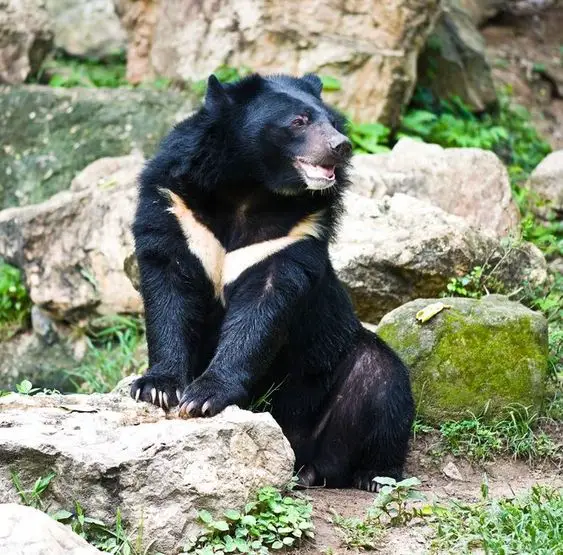Introduction to Asian Black Bear
The Asian Black Bear, scientifically known as Ursus thibetanus, is an intriguing species of bear found predominantly in Asia.
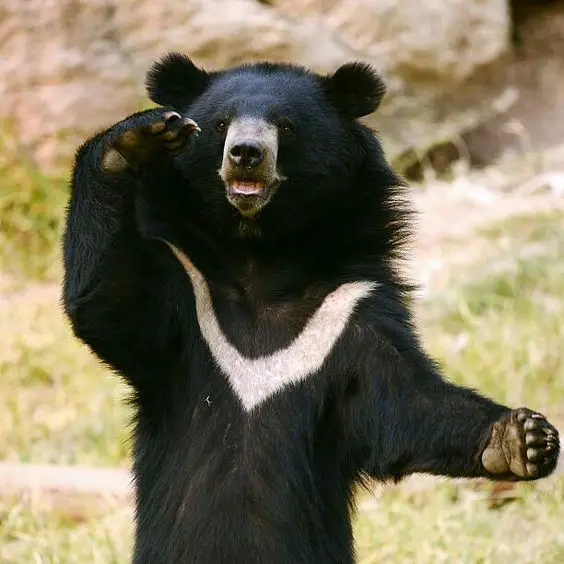
Also referred to as the Moon Bear or White-chested Bear, this mammal is recognized by its distinctive white chest patch and shaggy dark fur.
This species has sparked the interest of wildlife enthusiasts, conservationists, and researchers alike due to its unique characteristics and behavior.
Physical Characteristics of the Asian Black Bear
The Asian Black Bear features a robust build, with adult males typically weighing between 220 and 440 pounds, while females are generally lighter, averaging between 110 and 275 pounds.
Their body length ranges from 47 to 75 inches, with a shoulder height of approximately 27 to 36 inches, showcasing sexual dimorphism where males are larger than females.
As their moniker suggests, Moon Bears possess a white or cream-colored crescent marking on their chest, giving rise to their other common name.
Their coat is thick and long, particularly in the winter, providing insulation against the cold climates within their habitats, which can include temperate forests, subalpine regions, and scrublands.
Habitat and Distribution: Where Asian Black Bears Call Home
Asian Black Bears inhabit a wide range of environments across the Asian continent.
From the easternmost parts of Russia through the dense forests of China, down to the northern regions of India and Southeast Asia, these bears have adapted to various ecosystems.
They were once prevalent throughout their range, but deforestation and human encroachment have fragmented their habitat, pushing them to reside in increasingly remote areas.
Their predilection for forested areas comes from both the availability of food sources and the cover they provide for denning during hibernation periods.
Specifically, these bears are often found in regions such as the Himalayas, Korean Peninsula, and Japanese archipelago, exhibiting a remarkable adaptability to differing climate conditions.
Asian Black Bear Diet: What’s on the Menu?
Asian Black Bears are classified as omnivores but their diet leans more towards a herbivorous nature.
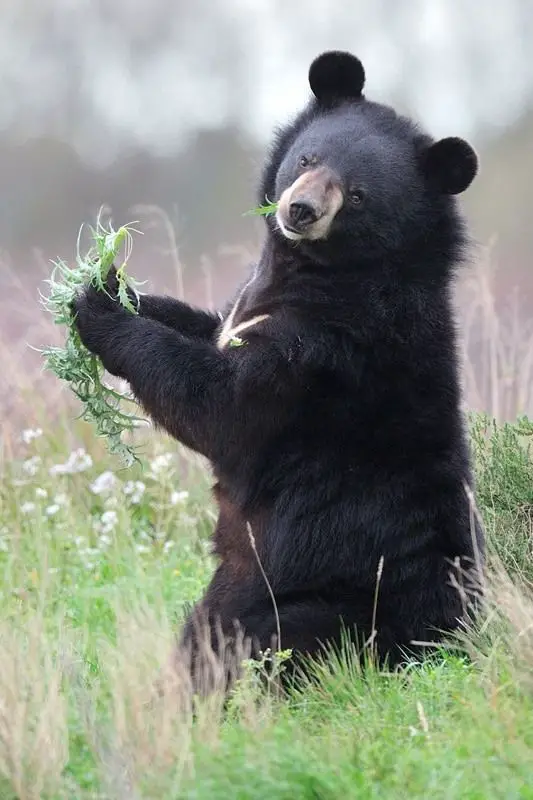
They predominantly forage for a variety of plant matter, including fruits, nuts, berries, and foliage, complementing their plant-based diet seasonally with insects, small mammals, and carrion.
During the times when high-energy foods like acorns and chestnuts are plentiful, the bears will often consume these in large quantities to prepare for winter denning.
Their diverse dietary habits have significant ecological implications, as they assist in seed dispersal and help regulate insect populations.
Behavioral Traits: Understanding the Moon Bear’s Lifestyle
Asian Black Bears are primarily nocturnal creatures, although they can be active during the day in areas with less human activity.
They are also known as excellent climbers and will often ascend trees to forage for food or escape threats.
These bears are generally solitary, except for mothers with cubs or during the breeding season.
Communication among bears involves a range of vocalizations, body language, and scent marking, with mother bears being particularly vocal when interacting with their cubs.
Reproduction and Lifespan: Continuing the Lineage
Breeding season for Asian Black Bears takes place in the late summer to early fall.
Females give birth to one to four cubs every other year, with two being the typical litter size.
After a gestation period that can last from six to eight months, including a period of delayed implantation, the cubs are born during winter while the mother is denned.
Bear cubs are born blind and dependent on their mothers for protection and nourishment until they are ready to venture out of the den in the spring.
Asian Black Bears can live up to 25 years in the wild, although their lifespan can be significantly shorter in areas with high rates of human-induced mortality.
Conservation Status and Threats
As with many wildlife species, the Asian Black Bear faces several threats to its survival.
The International Union for Conservation of Nature (IUCN) has listed this bear as “Vulnerable,” with populations decreasing primarily due to habitat loss and illegal hunting.
The bear’s body parts are sought after for traditional medicine and as trophies, while their gallbladders are particularly valued for the bear bile extracted for use in various medicines.
Efforts to combat these threats include habitat preservation, anti-poaching measures, and public education to reduce demand for bear parts.
Understanding the biology and natural history of bears is crucial for effective conservation strategies.
Cultural Significance of the Asian Black Bear
Beyond ecological importance, the Asian Black Bear holds a special place in the cultural and spiritual realms of many Asian societies.
These bears, often personified in folklore and myths, serve as symbols of strength and resilience.
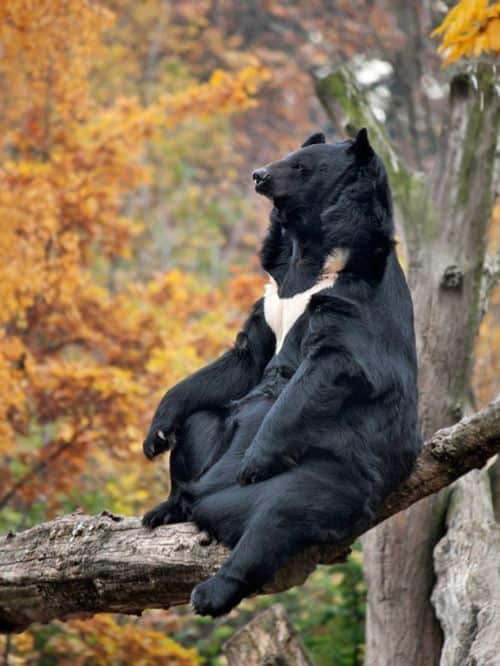
However, the encroachment of modernization has led to a decline in these cultural representations, paralleling the physical threats to bear populations.
In Korea and Japan, the bear is featured in traditional ceremonies and art, underscoring its longstanding cultural influence.
Observing Asian Black Bears in the Wild
While Asian Black Bears can be elusive, observing them in their natural habitat is a rewarding experience for wildlife enthusiasts.
Visitors to national parks and wildlife reserves may have the opportunity to spot these bears, particularly during the early morning or late evening when the bears are most active.
It is important to maintain a safe distance and adhere to park regulations to ensure both personal safety and respect for the bears and their environment.
Unique Behaviors and Adaptations
Asian Black Bears have evolved a variety of unique behaviors and adaptations to navigate the dynamic environments of Asia.
One such adaptation is their remarkable ability to hibernate in colder climates, where they can remain in dens for several months during winter without eating, drinking, or excreting waste.
During this period, they rely on fat reserves accumulated throughout the year.
This hibernation process has intrigued scientists and provided insights into mammalian survival strategies.
Frequently Asked Questions About Asian Black Bears
What is the usual diet for Asian Black Bears?
Asian Black Bears primarily consume vegetation like nuts, fruits, and berries, supplemented with insects, small mammals, and sometimes carrion.
Are Asian Black Bears endangered?
While not classified as endangered, Asian Black Bears are listed as “Vulnerable” by the IUCN, with their populations declining due to habitat loss and poaching.
Do Asian Black Bears hibernate?
Yes, in regions with harsh winters, Asian Black Bears will hibernate in dens to conserve energy during months when food is scarce.
How can we help conserve Asian Black Bears?
Conservation efforts include protecting natural habitats, enforcing anti-poaching laws, and reducing the demand for bear parts through education and awareness campaigns.
Asian Black Bears and Ecosystems
Asian Black Bears play a crucial role in maintaining healthy ecosystems.
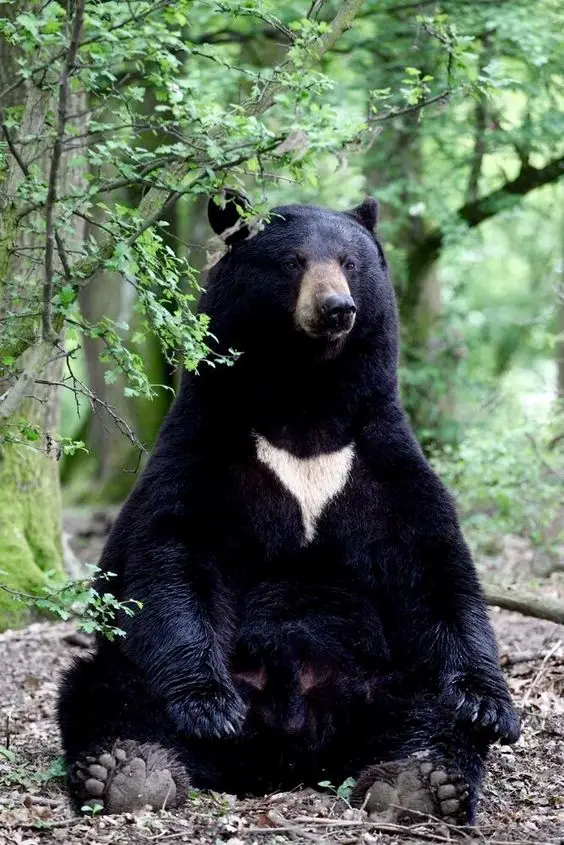
As seed dispersers and regulators of insect and small mammal populations, they contribute to biodiversity and forest health.
Their presence in an ecosystem can often indicate its overall wellbeing, as they require vast territories and diverse food sources to thrive.
Their influence on ecosystems reflects the need for comprehensive conservation efforts to preserve these complex ecological networks.
Protecting the Asian Black Bear
Protecting Asian Black Bears requires a multi-faceted approach, including legal protection, habitat conservation, and community engagement.
Several countries within the bear’s range have implemented laws to protect them, and international agreements like CITES work towards reducing illegal trade.
Creating protected areas and wildlife corridors allows bears to roam and find mates without coming into conflict with human settlements.
Community-based initiatives such as conflict mitigation programs and sustainable tourism can create local guardianship for the species, fostering a coexistent environment.
Research and Study: Enhancing our Understanding
Continual research is vital in understanding the behavior, genetics, and health of Asian Black Bears.
Long-term studies contribute to better management practices and effective conservation strategies.
By investing in scientific research, we can better anticipate and mitigate the challenges that Asian Black Bears face, ensuring a future for this charismatic species.
Asian Black Bears in Folklore and Myth
The Asian Black Bear’s cultural significance in Asia is rich and varied.
In several cultures, they are seen as noble and courageous creatures, often associated with warriors and heroes in ancient tales.
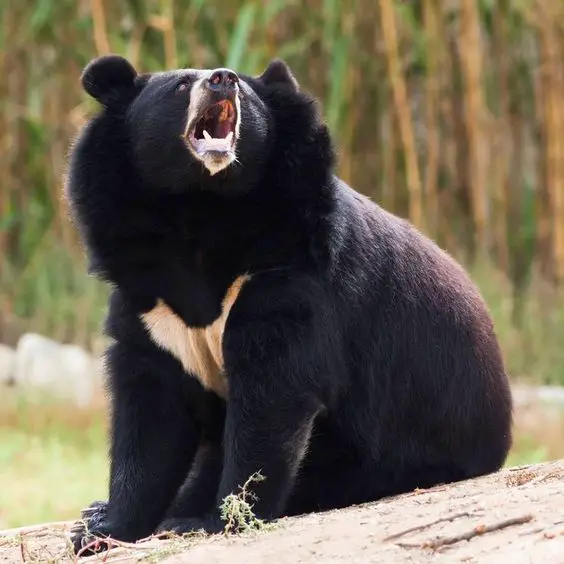
This cultural reverence highlights the need to not only preserve the species for its ecological value but also for its enduring cultural legacy.
Conclusion
In conclusion, the Asian Black Bear is a symbol of the rich biodiversity found in Asia, playing a vital role in its ecosystems while holding an esteemed place in cultural heritage.
The challenges it faces are significant, but with concerted conservation efforts and an increase in public awareness, there is hope for the preservation of this majestic species for generations to come.
Whether through reading more about the species or supporting conservation initiatives, we can all contribute to the legacy of the Asian Black Bear.
Understanding Asian Black Bear Behavior and Social Structure
Asian Black Bears display a complex array of behaviors that reveal their intelligence and adaptability.
They are mostly solitary except when mothers care for cubs or during mating season when males seek out females.
During mating, Asian Black Bears engage in elaborate courtship rituals, which involve circling, vocalizing, and sniffing.
These solitary bears mark their presence in their territory by rubbing against trees and scratching on the bark to leave visual clues and scents for others.
Their social structure is based on hierarchy, where larger and older bears dominate access to resources.
The Predatory Habits of Asian Black Bears
Although they primarily consume plant-based diets, Asian Black Bears can be opportunistic predators.
They may hunt small to medium-sized animals, such as rodents and ungulates, especially when preferred food sources are scarce.
They use their keen sense of smell to locate prey and can be surprisingly quick and agile during the chase, despite their bulky appearance.
However, they typically aren’t aggressive hunters and only resort to predation out of necessity.
Human and Asian Black Bear Conflicts
Human encroachment on forests has led to increased encounters between people and Asian Black Bears.
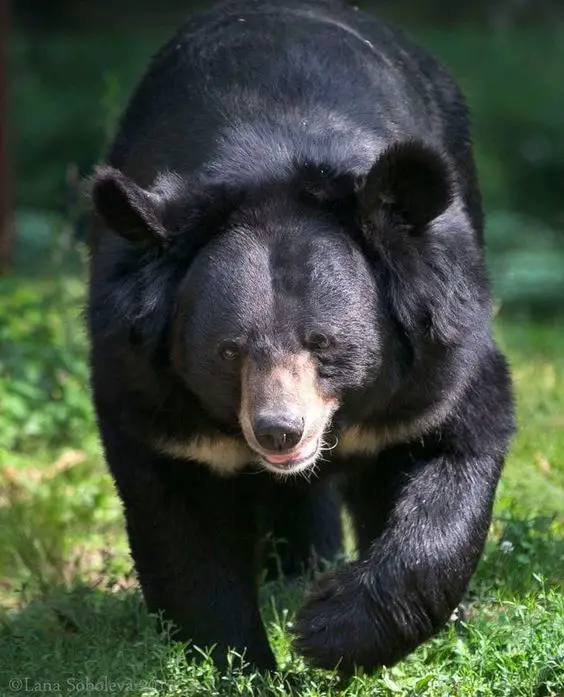
In some regions where their habitat overlaps with human settlements, bears may wander into villages in search of food, leading to conflicts.
Attempts to manage these conflicts include bear-proofing waste disposal sites, community education, and relocation of problematic bears when necessary.
It is crucial to address these issues sensitively to protect both human communities and bear populations.
Understanding the Role of Bears in the Forest Ecosystem
Asian Black Bears have a profound impact on the forest ecosystems in which they live.
They play a crucial role in the food chain, managing populations of herbivores and insects, and help in the dispersal of seeds, contributing to forest regeneration.
Digging for roots and tubers, they also aerate the soil, promoting nutrient cycling.
As a result, the presence of these bears is an indicator of environmental health and biodiversity.
Encountering Asian Black Bears: Guidelines for Safety
If you find yourself in Asian Black Bear territory, there are important safety tips to follow.
Travel in groups, make noise to avoid surprising a bear, carry bear spray, and know how to use it.
Never approach or feed wild bears, and if you encounter one, remain calm, avoid direct eye contact, and slowly back away without running.
Understanding bear behavior can greatly reduce the risk of negative encounters.
Asian Black Bear Adaptations to Seasonal Changes
Asian Black Bears exhibit fascinating adaptations to seasonal variations in their environment.
In regions that experience cold winters, they hibernate to conserve energy, relying on fat reserves they’ve built up during the fall.
In warmer areas, these bears may remain active year-round but adjust their foraging habits based on seasonal food availability.
Their ability to adapt their metabolic rate and behavior according to seasonal changes is a testament to their evolutionary success.
The Future of Asian Black Bears in Wildlife Conservation
The protection and future of Asian Black Bears are intricately linked to the success of wildlife conservation efforts in Asia.
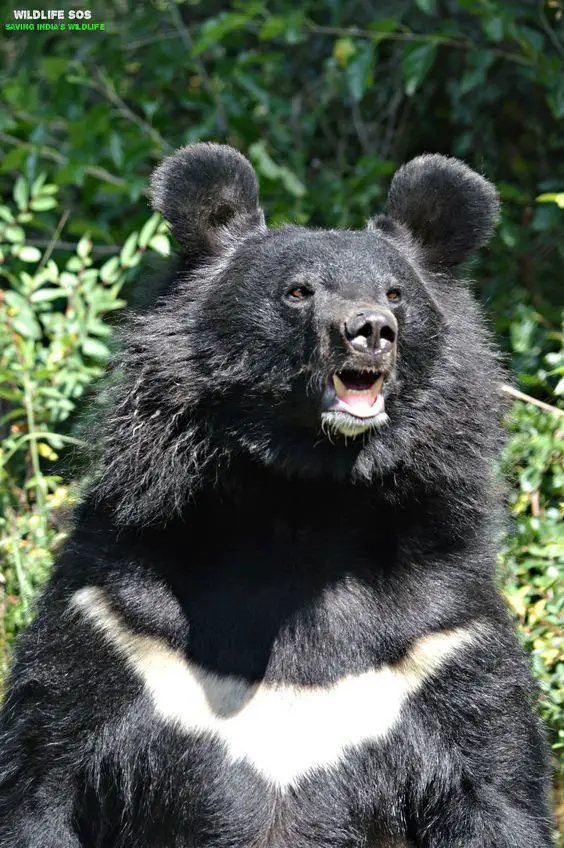
Conservationists and wildlife managers are working to create sustainable management plans that include laws against poaching, protection of habitats, and community engagement programs.
These efforts aim not only to protect the Asian Black Bear but also to preserve the delicate balance of the ecosystems they inhabit.
Exploring Asian Black Bear Reserves and Conservation Parks
Across Asia, numerous conservation parks and reserves have been established to protect the Asian Black Bear and its habitat.
These designated areas allow bears to live relatively undisturbed by human activity, and provide safe havens where research and population monitoring can take place.
Visiting these parks responsibly provides a valuable opportunity to learn about and support conservation initiatives.
Research Contributions to Asian Black Bear Rehabilitation
The survival of the Asian Black Bear is bolstered by research that leads to effective rehabilitation strategies.
Rescue centers across Asia are dedicated to the care of injured or orphaned bears, often victims of wildlife trade, with the goal of reintroducing them into the wild.
Studies on bear behavior, health, and habitat needs inform these rehab efforts, providing data crucial for their success.
Asian Black Bears and the Illegal Wildlife Trade
Unfortunately, Asian Black Bears are victims of illegal wildlife trade, which poses a significant threat to their populations.
Bear bile farms, where bears are kept in captivity and harvested for their bile, are a particularly cruel aspect of this trade.
International and local laws aim to combat this trade, and supporting ethical wildlife organizations can contribute to the fight against these illegal activities.
Participating in Asian Black Bear Conservation Efforts
Individuals can make a difference in the conservation of Asian Black Bears by supporting wildlife conservation groups, adopting sustainable living practices, and advocating for policy changes.
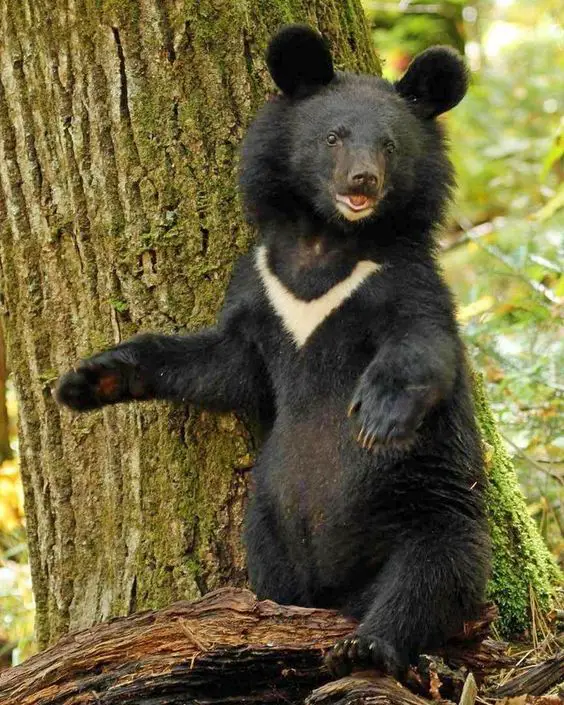
Raising awareness about the plight of these bears and the challenges they face can inspire others to join the conservation efforts.
Together, we can ensure a more hopeful future for the Asian Black Bear and its environment.
Asian Black Bears in Wildlife Research and Education
Wildlife research and education are critical components of Asian Black Bear conservation.
Through study and observation, researchers can gain insights into bear ecology, genetics, and behavior, which can inform conservation strategies.
Educational programs can increase awareness about the importance of bears in ecosystems, promoting coexistence and a greater understanding of these fascinating creatures.
Tourism Impact on Asian Black Bear Habitats
Ecotourism, when conducted responsibly, can have a positive impact on conservation efforts, including those for the Asian Black Bear.
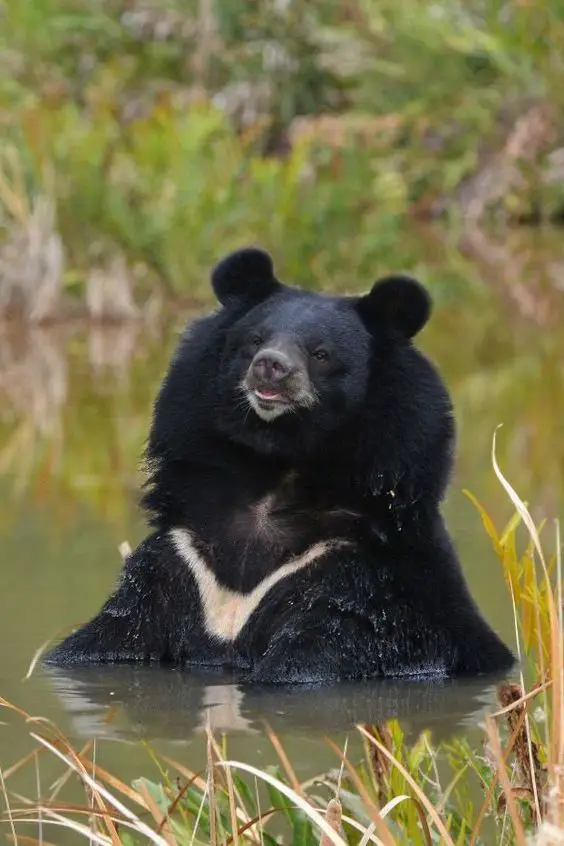
However, it is crucial to ensure that tourism activities do not disrupt the bears’ natural behavior or habitat.
Guidelines for responsible tourism in bear habitats can help visitors appreciate the bears from a safe distance without causing harm.
Frequently Asked Questions About Asian Black Bears
Where can one observe Asian Black Bears in the wild?
Asian Black Bears can be observed in several Asian countries, particularly in protected areas like national parks and wildlife reserves, though sightings can never be guaranteed due to their elusive nature.
How does the Asian Black Bear impact its ecosystem?
As a keystone species, the Asian Black Bear influences the health of its ecosystem by controlling prey populations, dispersing seeds, and maintaining vegetation through foraging.
What measures are being taken to protect Asian Black Bears?
Conservation measures include habitat protection, strict anti-poaching laws, rehabilitation efforts, and awareness campaigns to curb illegal wildlife trade.
How can we reduce human-bear conflicts?
Reducing human-bear conflicts can be achieved by securing bear attractants, educating communities about bear behavior, and implementing non-lethal deterrent methods to encourage bears to remain in the wild.

